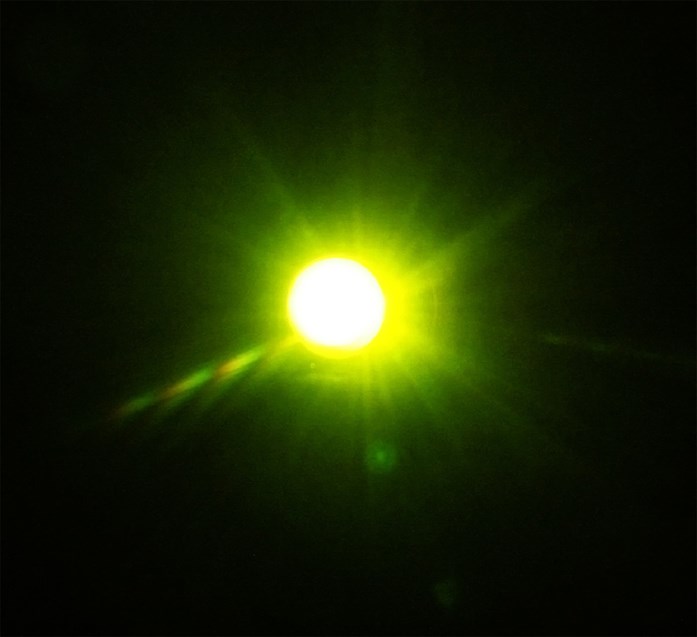Antiterrorism efforts could receive a major boost from technology developed at Texas A&M University that enables the identification of explosives, biological agents or hazardous chemicals from distances of a half mile and farther.
The technology, which was developed by a team of researchers that includes Professor Vladislav Yakovlev of the university’s Department of Biomedical Engineering, makes use of lasers to traverse long distances and identify dangerous materials present within powders that commonly act as carriers for explosive nitrates and lethal biological agents such as anthrax and ricin. In addition, the laser-guided system has agricultural applications, particularly as a tool for precision farming, and forensic capabilities.
The work of the team, which includes Distinguished Professor of Physics and Astronomy Marlan O. Scully, is funded by the National Science Foundation as well as the U.S. Air Force Research Laboratory. The team's findings are detailed in the scientific journals “Nature Communications” and “Proceedings of the National Academies of Sciences.”
The potentially life-saving technology is made possible by a high-powered laser that is beamed onto a powder for an extremely short amount of time (about a trillionth of a second), says Yakovlev, an authority on sensing instrumentation. When laser light contacts the molecules present within the powder, it experiences a scattering effect that researchers can analyze to construct a sort of molecular “fingerprint” that reveals the exact chemical makeup of the powder.
“As part of our research, we identified individual nitrates in powder at a distance of a half kilometer,” Yakovlev says. “In a single shot we were able to distinguish those chemicals with 99-percent accuracy, and now we’re working on identification from even greater distances.”
The initial success of Yakovlev’s detection technology is due largely in part to the fact that he can generate an emission that can be detected by a spectrometer that’s positioned more than a half-mile away. Traditionally, collecting an excited signal from such long distances has been a significant obstacle for researchers who are developing remote-sensing technology, but by taking advantage of the inherent properties of the powder he is targeting, Yakovlev has been able to dramatically amplify the resulting emission.
“In very simple terms, we can take a powder, shine a laser on this powder, and we get a type of scattering effect that enhances our signal,” Yakovlev says. “This was the first demonstration that this is indeed possible with powders.”
The powder, Yakovlev explains, provides the conditions by which light is amplified. When a laser passes through the powder, its wavelength is not fully absorbed. Instead, some of the light from the laser scatters, and the path length increases because of this multiple scattering – something scientists refer to as the “Raman effect.” This scattered light, Yakovlev notes, is then emitted from the powder in a strong, diffuse form that is visually similar to a bright LED light. It’s this extremely bright emission that can be collected from long distances, Yakovlev says.
 [When a laser passes through the targeted powder it triggers a strong emission of light that can be used to analyze the sample.]
[When a laser passes through the targeted powder it triggers a strong emission of light that can be used to analyze the sample.]
“We get a large amount of energy into the system in a very short amount of time. This is what allows the process to happen,” Yakovlev says, noting that his team has been able to increase the scattering efficiency by nine orders of magnitude, meaning more light can be detected from greater distances. It’s an achievement that could pave the way for the technology’s use in military and homeland security applications.
“Ideally, you’d like to target a suspicious substance from an airplane, possibly, which could beam a laser at the powder and collect the resulting signal with a powerful parabolic antenna so that the signal could then be analyzed while keeping personnel out of harm’s way,” Yakovlev says.
Joining Yakovlev in this research effort are Hope T. Beier, Robert J. Thomas and Benjamin Rockwell of the 711th Human Performance Wing, Human Effectiveness Directorate, Bioeffects Division, Optical Radiation Bioeffects Branch, Joint Base San Antonio; Gary D. Noonjin of TASC, Inc; Distinguished Professor of Physics and Astronomy Marlan O. Scully; graduate students Brett Hokr, Joel Bixler and John Mason; Postdoctoral Researcher Georgi I. Petrov; and Leonard A. Golovan of Moscow State University.
-30-
Contact: Professor Vladislav Yakovlev at (979) 458-2326 or via email at yakovlev@tamu.edu or Ryan A. Garcia at (979) 979.847.5833 or via email at ryan.garcia99@tamu.edu.